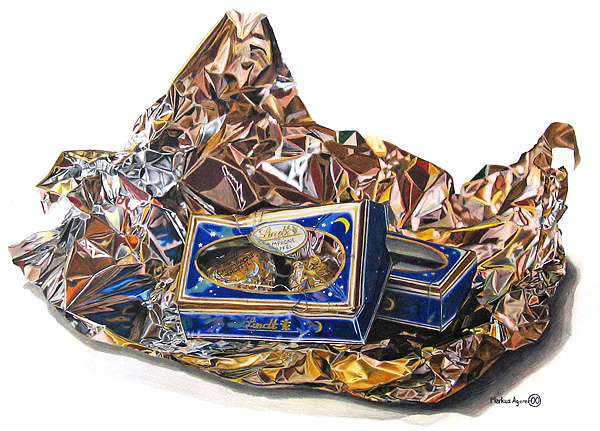An important task in the visual arts is the drawing of still lifes. A still life is the representation of mostly inanimate subject matter presented in the form of a drawing, a painting or a photograph.
Furthermore drawing of still lifes is one of the best ways to learn how to draw and paint. By drawing a still life you can learn (or teach) how to look at objects and how to depict them on the paper. You will learn to get a perceptive awareness of the shape, proportions, tone, texture, color and form of the motive but also a sense for good compositions.
Before you start drawing a still life, you should select all the relevant objects in peace and carefully consider their grouping. In addition to the content aspects, diverse aesthetic components have a particular effect on the later impression of the image to viewer.

The best thing you can choose for your still life are items that are related to each other. After that you group them so that they give a harmonious overall picture. Suitable motifs for a still life would be, for example, various fruit varieties in a basket or a musical instrument with music stand and the accompanying notes. The drawing of different seafood on an opulent plate of porcelain or a burning candle in a suitable candlestick would also be conceivable as motifs for still life – to name just a few classic examples.
A rough sketch, from which the aesthetic arrangement of the selected objects for the still life appears, should advance your work. For the later drawing of the actual picture, this is a valuable help. Often, it is sufficient for you to sketch a geometrical body that corresponds in its form to the later complete composition of the still life. In our example, a triangle was used as a geometric shape. A second, smaller triangle was added to it, which depicts the shadow.
.jpg)
A triangle, which is oriented like a pyramid upwards, is very popular with the drawing of still life. With its solid base, stable sides and vertical orientation, it has a very aesthetic effect on most people. If you prefer to paint a still life, rather than to draw, your way leads also over this rough sketch.
For the contentual composition of a still life you should choose objects at best, which are connected in some way and chime together in form and color.
As you can see in the sketch below, in which fruits and a square juice beverage box were drawn, absolutely opposing forms can also give the still life a very special creative tension. The end result this composition has a very interesting effect on the viewer.
.jpg)
Before you actually draw, you should put together all selected objects for the still life on a table as they appear in the picture later. In addition, a previous photographing of the whole arrangement is an excellent way to get a first impression of the effect of the objects. Furthermore, you are not bound to a specific place at the later, when you draw by reference to the photo reference. Another advantage of drawing with a photo reference is that the angle at which you look at the objects always remains the same.
If you work with natural light, you should keep in mind that the sun is constantly changing. This may lead to an unfortunate shadow formation with progressive work. By setting up an additional lamp, this effect can be avoided relatively easily. While you draw the still life, you can change the lamp several times and try different shadow effects. It is worth while to take a shot at different light positions to experiment a little. With skill and patience you will surely find the optimal light-shadow composition for your still life.
To draw the first sketch, use a soft pencil that gently slides over the paper. Start with the sketching of the geometric form, such as the triangle. Do not press too hard with the pencil, so that you can raze out the strokes later on. Then you sketch the outlines of all objects, taking care that the still life does not get too close to the edge of the drawing paper.
.jpg)
Now follows the drawing of shadows. If you intend not to draw your still life but to paint, then all the steps described above apply in the same way. From now on you reach either the pen or the brush and design the objects as detailed as you imagine. Strong contrasts (in tonal value) often have a particularly exciting effect. This means that the dark areas in the extreme case will get black shadows and particularly bright areas may remain completely white.
If you work with colors (like oil, acryl, water colors etc.) you have to add also color to your still life painting.
.jpg)
In the hope that this short guide that shows you how to draw a still life could give you some helpful suggestions. A lot of fun and success in the drawing of still life!
This website is about how to draw and paint. You will learn to use pencil and brush and how to drawn and paint your own pictures.